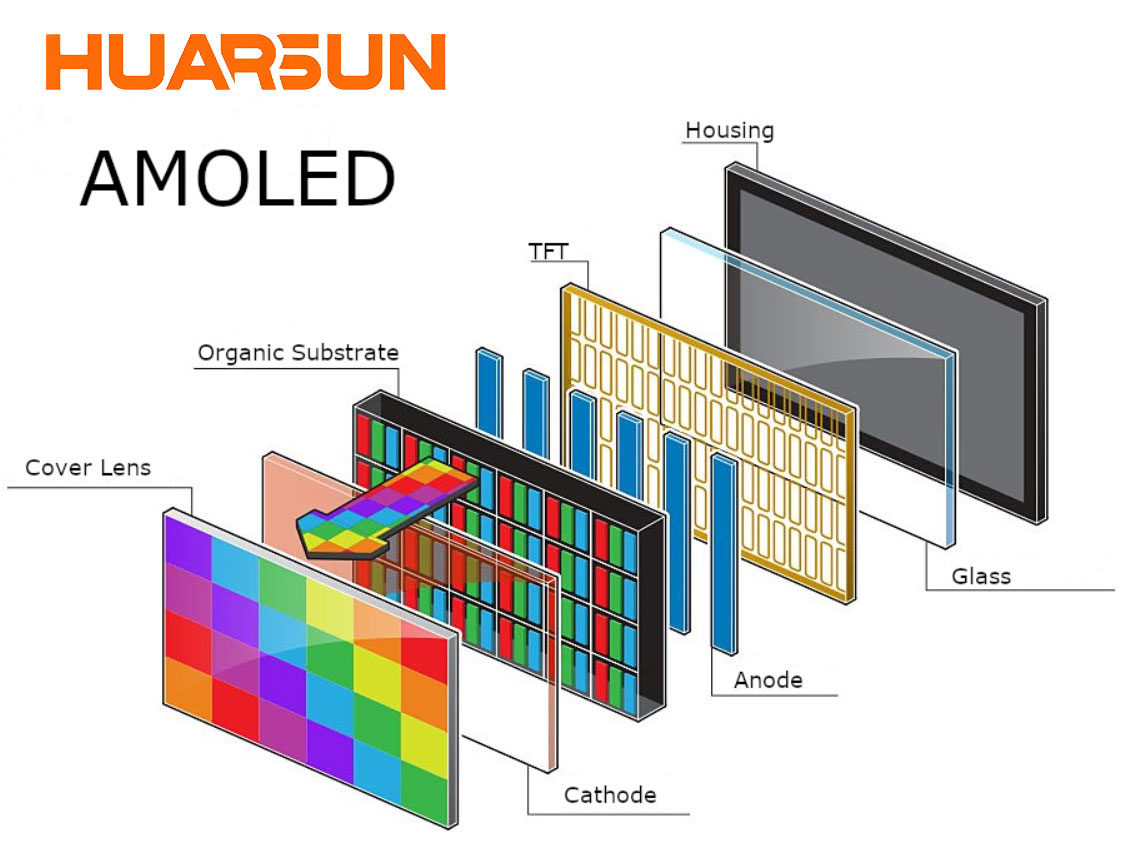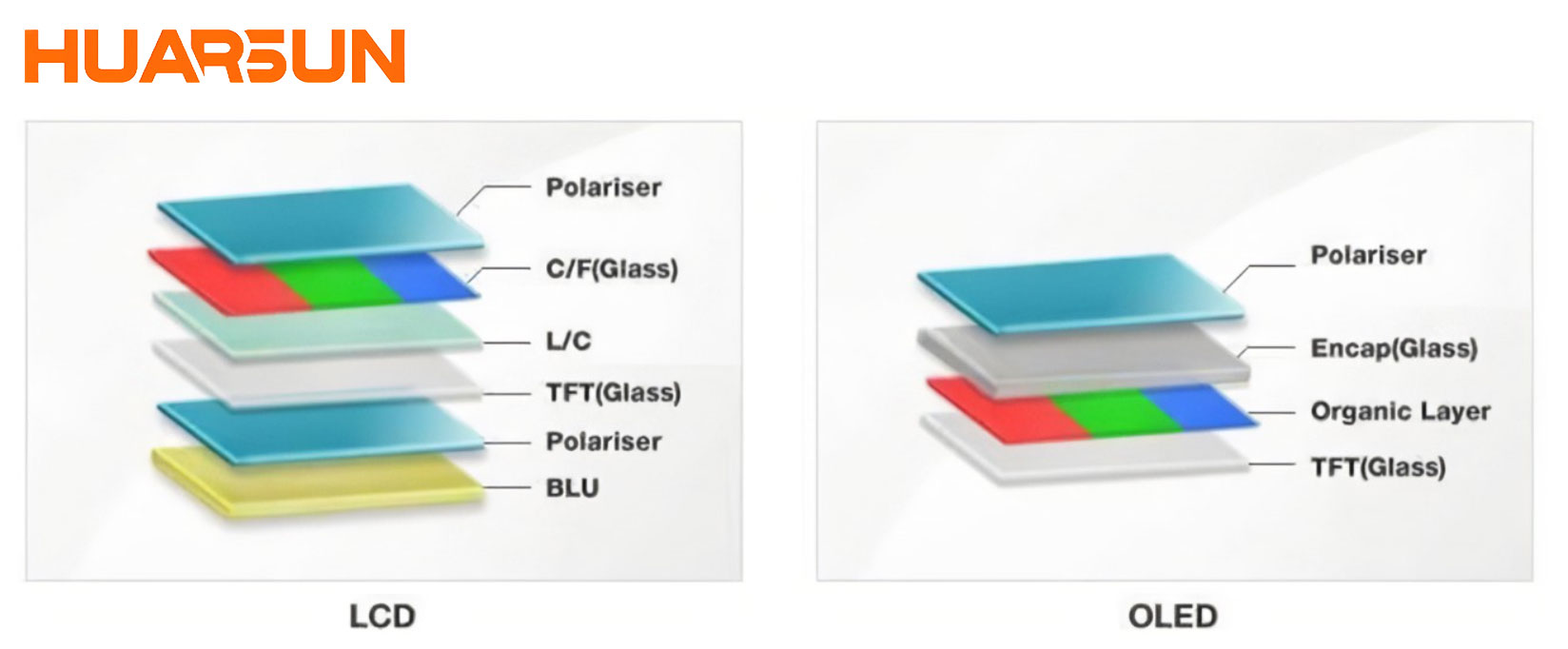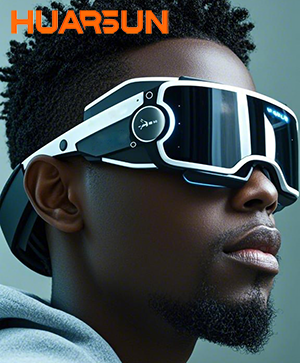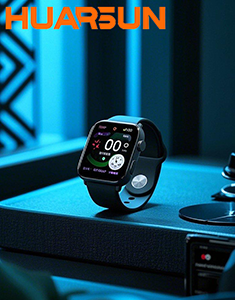Understanding the Science: Insights from Wired’s “How Super AMOLED Displays Work”
Key Trends in Small-Size Display Technology
Application Scenarios: Real-World Impact of Small-Size Displays
Future Outlook: The Convergence of Display Technologies and AI

Introduction
The display industry is undergoing a rapid transformation, driven by the increasing demand for small-size displays in a wide range of applications. As a manufacturer specializing in displays from 0.95 to 8 inches, our focus on AMOLED and TFT technologies allows us to deliver solutions with exceptional brightness, vivid color accuracy, and low power consumption.
This article offers a neutral, in-depth analysis of the evolving trends in small-size display technology. It highlights how AMOLED and TFT displays are influencing the future of wearables, IoT devices, industrial controls, and smart systems. The discussion draws on industry insights—including foundational concepts from Wired’s “How Super AMOLED Displays Work”—to explore the potential and challenges of these display solutions.
The Evolution of Small-Size Displays
From Traditional LCDs to Advanced AMOLED and TFT Technologies
Small displays have come a long way since the early days of monochrome LCD panels. Modern applications demand not only high resolution and color accuracy but also low power consumption and robust performance in varied environments.

AMOLED Displays
AMOLED (Active Matrix Organic Light-Emitting Diode) technology has redefined display performance by offering:
-
Superior contrast ratios: Each pixel emits its own light, enabling true blacks.
-
Vibrant color reproduction: With high color gamut coverage, these displays can render images with lifelike hues.
-
Energy efficiency: By turning off individual pixels, AMOLED panels reduce power consumption—an essential feature for battery-powered wearables.
Our 1.47-inch LTPS AMOLED display is a prime example, delivering a high brightness level (with typical luminance around 550 cd/m²) and excellent viewing angles (around 88° in all directions). This ensures that even in outdoor conditions or harsh lighting, the display remains clear and visible.
TFT Displays
Thin-Film Transistor (TFT) displays, on the other hand, are renowned for:
-
Durability and longevity: Often used in industrial and control panel applications where reliability is crucial.
-
Cost-effectiveness: TFT LCDs continue to serve well in applications like coffee machine screens, thermostats, and other smart home devices.
In our portfolio, we offer both AMOLED and TFT modules tailored to meet the diverse needs of modern electronic systems—from high-end consumer devices to rugged industrial instruments.
Understanding the Science: Insights from Wired’s “How Super AMOLED Displays Work”
Wired’s article, “How Super AMOLED Displays Work”, offers an in-depth look at the technology behind these innovative screens. Although published over a decade ago, many of the core principles remain relevant today. Here are some key takeaways:
-
Integrated Touch and Display: One of the major innovations of AMOLED is the integration of the touch sensor directly into the display. This results in thinner panels and better image quality, as there is no additional layer to reduce clarity.
-
Energy Efficiency and Response Times: AMOLED panels can adjust brightness and color in real-time, significantly reducing power usage and improving response times. This is particularly vital for wearable devices where battery life is a primary concern.
-
Enhanced Viewing Experience: The article explains how improved viewing angles and contrast ratios enhance user experience—critical attributes that our 1.47-inch module exemplifies.
While we reference these insights, it is important to note that our implementations build upon these foundational ideas. We integrate modern driver ICs, such as the Qc1106CQF22-147-NATP and power ICs like the BV6802W, to ensure our displays meet the rigorous demands of today's smart devices.
Key Trends in Small-Size Display Technology
1. The Drive Toward Higher Brightness and Low Power Consumption
For applications in smart wearables and IoT, brightness and energy efficiency are paramount. Our displays are engineered to achieve:
-
High brightness levels (e.g., 550 cd/m² typical for our AMOLED modules) that ensure clear visibility even under direct sunlight.
-
Low power consumption, which extends battery life in devices such as smartwatches and portable health monitors.
2. Expanding Applications in Wearables and IoT
The trend toward miniaturization and enhanced functionality in consumer electronics has accelerated the adoption of small-size displays:
-
Wearable Devices: Devices like smartwatches and fitness trackers demand displays that are not only compact but also offer excellent readability and low power draw. Our AMOLED modules provide these benefits by delivering high-resolution visuals with superior color accuracy.
-
IoT Applications: Whether for smart home control panels or industrial monitoring systems, TFT displays continue to be critical components in systems where durability and cost-effectiveness are essential.
3. AI Integration and Real-Time Display Optimization
As artificial intelligence becomes more prevalent in device functionality, displays must adapt to process and render AI-generated content efficiently. This integration includes:
-
Real-Time Brightness and Contrast Adjustment: AI algorithms help optimize the visual output based on ambient conditions.
-
Enhanced User Interfaces: AI-driven interfaces can provide dynamic content and interactive experiences, making high-performance displays a necessity.
4. Advancements in Manufacturing and Material Science
Modern display manufacturing leverages advanced processes like COG (Chip On Glass), COB (Chip On Board), and CTP (Chip To Panel) full lamination. These techniques contribute to:
-
Thinner, lighter, and more durable displays
-
Improved optical performance by reducing the number of layers between the display and the user
-
Enhanced integration capabilities for next-generation devices
Application Scenarios: Real-World Impact of Small-Size Displays
Wearable Technology
Wearable devices are one of the fastest-growing markets for small displays. Our 1.47-inch AMOLED module is particularly well-suited for:
-
Smartwatches and Fitness Trackers: Delivering crisp images and responsive touch interfaces.
-
Medical Wearables: Ensuring high clarity for patient monitoring and data visualization.
IoT and Smart Home Devices
In smart home and industrial settings, displays must operate reliably in varied conditions. Applications include:
-
Thermostats and Control Panels: TFT displays offer durability and readability.
-
Home Automation Devices: High-brightness AMOLED panels enhance user interaction and data display.
Industrial and Medical Applications
For industrial and medical devices, precision and reliability are critical:
-
Industrial Instruments: Robust TFT displays ensure clear readings in control systems.
-
Medical Equipment: High-resolution displays provide accurate diagnostics and monitoring.
Future Outlook: The Convergence of Display Technologies and AI
The future of small-size displays lies in the seamless integration of cutting-edge hardware with smart, AI-driven software. As manufacturers and device makers seek to offer more immersive and responsive user experiences, we can expect to see:
-
Further improvements in color accuracy and contrast in AMOLED panels.
-
Continued reduction in power consumption, which is crucial for battery-operated devices.
-
More sophisticated AI algorithms that optimize display performance in real time.
-
Expansion into new application areas, such as augmented reality (AR) and virtual reality (VR), where ultra-high-resolution small displays will be essential.
Our commitment to research and development ensures that we remain at the forefront of these innovations, continually refining our AMOLED and TFT display solutions to meet evolving market demands.
Conclusion
As we move into an era defined by smart wearables, IoT devices, and AI-enhanced systems, small-size display technology is playing an increasingly vital role. Our advanced 1.47-inch LTPS AMOLED modules, along with our range of TFT displays, offer unparalleled performance in brightness, energy efficiency, and integration versatility.
By building on foundational research—such as that presented in Wired’s “How Super AMOLED Displays Work”—and continuously innovating in manufacturing processes and material science, we are poised to lead the way in the future of display technology. Whether it’s for consumer electronics, industrial controls, or medical devices, our solutions are designed to meet the demands of a rapidly changing technological landscape.









 Home
Home HEM LCD
HEM LCD  Mar 28,2025
Mar 28,2025 
 HUARSUN Exploring the Future of AMOLED Displays in Wearables and Smart Electronics
HUARSUN Exploring the Future of AMOLED Displays in Wearables and Smart Electronics 
 Mar 03,2025
Mar 03,2025 







